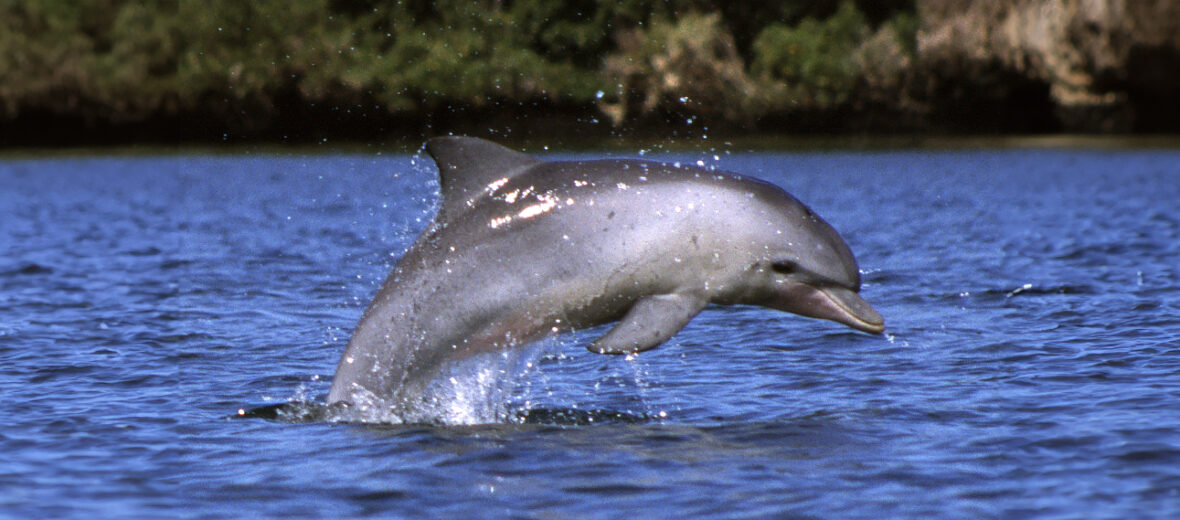
The Indo-Pacific bottlenose dolphin, aka Indian Ocean bottlenose dolphin, can be found along the coastlines of northern Australia, South China, India, the Red Sea, and along the eastern coast of Africa in warm temperate to tropical waters. Unfortunately, they face the threats of habitat destruction at the hands of residential and commercial developments; interference and boat strike (being hit by boats and ships) from shipping lanes; overfishing; recreational activities disturbing their breeding sites; diseases; and pollution. The IUCN lists these dolphins as Near Threatened. Their population trend is unknown.
First the Stats…
Scientific name: Tursiops aduncus
Weight: Up to 510 lbs.
Length: Up to 8.5 feet
Lifespan: Up to 40 years
Now on to the Facts!
1.) They are found at depths of up to 984 feet.
2.) The Indo-Pacific bottlenose dolphin is smaller than the common bottlenose dolphin, but with a longer rostrum (snout). They also get “age spots” on their ventral side as they get older.
3.) Due to the longer rostrum, these dolphins also have more teeth; up to 116 in total.
4.) A group of dolphins is called a herd, pod, or school.
5.) These very social critters can be seen in pods numbering into the hundreds, but up to 15 is more common.
But wait, there’s more on the Indo-Pacific bottlenose dolphin!
6.) They frequently associate and mingle with humpback dolphins and common bottlenose dolphins.
7.) Communication is conducted via auditory (sound) and tactile (touch) means. They each have a unique whistle that identifies them, and they also touch flippers with one another.
Did you know…?
In Shark Bay, Australia these dolphins have been documented “sponging”. This is where they will remove a marine sponge from the sea floor and wear it on their snout. It is uncertain as to why this is done. Some theories are that they do this for play, as a tool, or to scour the sea floor for fish.
8.) Their vision isn’t the best, so they have evolved an acute sense of hearing.
9.) Being piscivores, these dolphins prey on a variety of fish, squid, octopuses, and squid.
10.) Like other dolphin species, Indo-Pacific dolphins are polygynandrous (promiscuous – males and females mate with several partners).
But wait, there’s still more on the Indo-Pacific bottlenose dolphin!
11.) In a practice called “mate guarding”, 1 – 3 males will herd females together for mating.
12.) Spring and summer are the primary mating seasons, however, in many regions mating occurs throughout the year.
Did you know…?
Dolphins are among the few known mammals that will reproduce for recreation, not just out of necessity.
13.) Females undergo up to a 12 month gestation (pregnancy) that yields a single calf.
14.) The calf is weaned in up to 2 years, but stays with mom for up to 5 years.
15.) A female, aka cow, will reproduce at up to 5 year intervals.
Now a Short Indo-Pacific Bottlenose Dolphin Video!
Be sure to share & comment below! Also, check out the Critter Science YouTube channel. Videos added regularly!
Want to suggest a critter for me to write about? Let me know here.
Some source material acquired from: Wikipedia & IUCN
Photo credit: Aude Steiner



